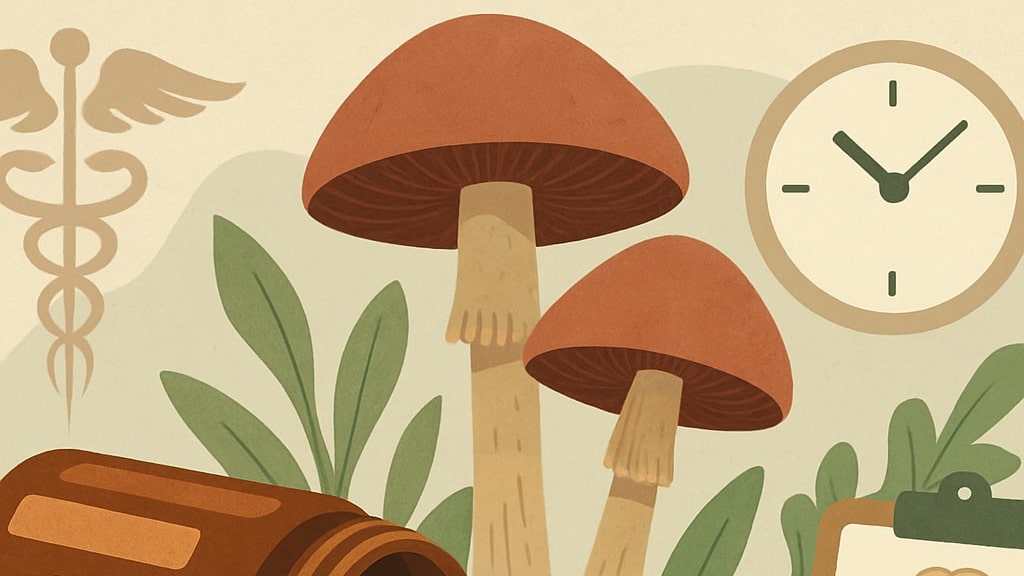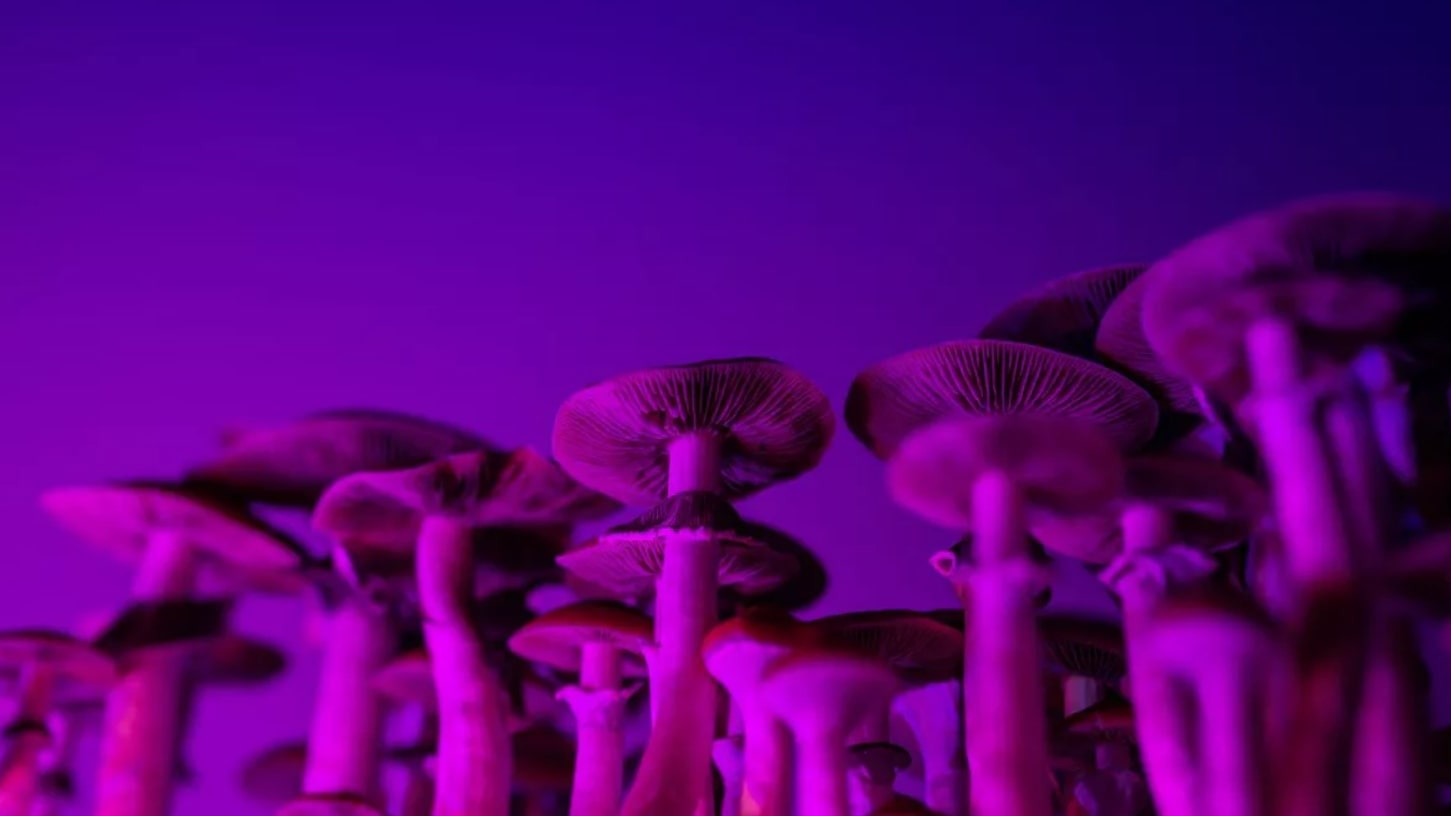Contents
- Psilocybin mushrooms: a return to therapy
- The therapeutic potential of psilocybin: from depression to PTSD
- Microdosing and the future of psilocybin in psychiatry
Psilocybin mushrooms: a return to therapy
In recent years, psilocybin mushrooms have rapidly attracted the attention of scientists and doctors due to their potential in the field of mental health. These mushrooms, which contain the active ingredient psilocybin, have traditionally been associated with shamanic rituals and spiritual practices, but today they are the subject of serious medical research. Their therapeutic use has been confirmed by the results of clinical trials at universities in the US, Canada, and Europe.
What makes psilocybin unique? Once in the body, it is converted into psilocin, a substance that affects serotonin receptors and causes powerful psychological and emotional experiences. It is this property that is actively used in psilocybin psychotherapy, where patients undergo sessions under the supervision of specialists aimed at overcoming depression, anxiety, or the effects of trauma.
Interestingly, even mushroom spores that do not contain active psilocybin have become the subject of scientific discussion. They are the basis for the cultivation of new strains, which is important for standardizing dosages and further studying the properties of specific species. This is especially relevant in conditions where psilocybin in medicine requires accuracy and predictability.
Today, psychedelics are gradually emerging from the shadows of prohibition and becoming a promising area for the development of modern psychiatry. More and more specialists are considering psilocybin as a medicine capable of bringing real relief to millions of people around the world.

The therapeutic potential of psilocybin: from depression to PTSD
Contemporary research confirms that psilocybin for therapy could be a real breakthrough in psychiatry. Thanks to its effect on the brain, psilocybin helps to “restart” neural connections, thereby paving the way for healing from severe mental conditions.
Here are the main areas where the therapeutic use of psilocybin demonstrates the greatest effectiveness:
- Treatment of depression with psilocybin.
Unlike traditional antidepressants, psilocybin can address the root causes of depression rather than merely suppressing symptoms. After just one or two sessions under the supervision of a psychotherapist, patients report improved mood and reduced emotional withdrawal.. - Treatment of anxiety with psilocybin.
Particularly effective for existential anxiety, fear of death, and generalized anxiety disorders. Patients experience inner peace and emotional relief that lasts for a long time.. - Psilocybin for PTSD.
The use of psilocybin in combination with psychotherapy helps people suffering from post-traumatic stress disorder to safely revisit traumatic memories and reinterpret them without panic or fear.. - Treatment of addiction with psilocybin.
Research shows that psilocybin promotes sustained abstinence from alcohol, nicotine, and even opioids. It helps change the deep-rooted behavioral patterns that underlie addiction..
It is important to note that the varieties of psilocybin mushrooms and their differences can affect the intensity and duration of the psychedelic experience. For example, Psilocybe cubensis is considered one of the most common and moderate in potency, while Psilocybe azurescens has a more powerful effect, requiring caution in therapeutic sessions.
This diversity opens up new possibilities for an individualized approach to therapy, where specific strains can be selected depending on the patient's diagnosis and mental state.
Thus, psilocybin in psychiatry is not just an experiment, but a real alternative to traditional methods, allowing to change the lives of people who have not found help in classical medicine..

Microdosing and the future of psilocybin in psychiatry
One of the most talked-about areas of modern psilocybin use in medicine is microdosing psilocybin—taking small doses of the stuff regularly that don't cause intense psychedelic effects but have a positive impact on mood, cognitive function, and overall emotional state.
Many proponents of microdosing claim that it helps to cope with chronic fatigue, anxiety, procrastination, and even boost creativity. Research on psilocybin confirms that in microdoses, it can gently activate areas of the brain responsible for concentration, flexibility of thinking, and emotional balance. This approach is increasingly being considered as an alternative to antidepressants.
When cultivating mushrooms at home, it is especially important to maintain the correct environmental conditions, where lighting plays a major role for psilocybin mushrooms. Although these mushrooms do not need intense light, proper lighting helps them develop properly and stimulates spore release.
Below is a brief table of growing conditions that are relevant for both laboratory research and private enthusiasts.:
| Parameter | Optimal value |
| Temperature | 22–25°C during the incubation phase |
| Humidity | 90–95% |
| Lighting for psilocybin mushrooms | 12/12 (12 hours light / 12 hours dark), weak diffused light |
| Fruiting period | 7–14 days (depending on the type) |
| Air exchange | Fresh air 3–5 times a day |
With the popularization of microdosing and the growing understanding of the benefits of psilocybin mushrooms, more and more countries are beginning to revise their laws. Psilocybin legalization is already being discussed at the government level in Canada, some US states, and European countries.
Thus, psilocybin as a medicine is not an abstract idea, but a real vector for the future development of psychiatry. Whether it's microdosing, deep session therapy, or scientific research, psychedelics are gradually taking their rightful place in the world of medicine.

Attention! Errors Seeds does not encourage you to grow cannabis and does not assist in any way with this activity. Growing cannabis is prohibited by Ukrainian law. This article is for scientific and informational purposes only.



Write a comment